With a Ryobi power washer, you can easily clean your car, prep your house for painting, or keep your outdoor living areas looking clean and tidy. But these units are known to have the occasional issues.
Luckily the most common problems, including low-pressure output, starting failures, and clogged nozzles, can all be fixed without a professional’s help or the need to replace the washer with a new one.
In our Ryobi pressure washer troubleshooting guide, we’ll walk you through the steps to fix these and other common problems with Ryobi gas, corded, and battery-operated pressure washers.
Ryobi Pressure Washer Won’t Start
The most common reason a gas Ryobi pressure washer won’t start is due to problems with the fuel or fuel system. Similarly, when electric units won’t start it is most likely the battery or electrical outlet that’s at fault. But there are many more reasons your washer may not start up, including:
- Faulty spark plug
- Dirty air or fuel filter
- Dirty carburetor
- Blocked fuel cap
- Damaged or inadequate power cord
- Dead battery or poor battery connection
- Overheating
- Mechanical problems
Gas Unit Solutions
- Check your gas level and assure there is enough gas to power the unit and that the fuel mix used is correct according to the user’s manual. If the gas has been sitting in the unit for some time, drain it and replace it with a fresh mix.
- Check your air and fuel filters. If dirty, remove and clean.
- If the carburetor looks dirty, use a carburetor treatment to unblock it.
- Check the hole in the fuel cap. If blocked, clean it to open it up.
If these solutions don’t work, you’ll need to do some testing and replace some parts to restore your pressure washer.
- Start by checking the spark plug by removing it from the unit and using a spark plug tester. If it tests bad, replace it.
- A faulty ignition coil can also cause a gas unit to fail to start. Test this using an all-in-one spark tester or an ignition coil tester. If it tests bad, replace it.
- Open the motor housing and locate the flywheel then remove it to locate the flywheel key. Check the condition of the flywheel key. If it’s damaged, replace it.
Corded Unit Solutions
- Assure the unit is plugged in and that the outlet is working correctly.
- Check the extension cord to ensure there is no damage to the line.
- Assure the extension cord is adequate for running the unit. In general, you’ll need a 14 gauge or heavier cord for these machines. For cords over 25 feet, size up to 12 gauge.
- If you’ve been using the unit and the motor feels hot, the circuit breaker in the unit may have tripped. Allow the unit to cool and try again.
If these solutions don’t work, your problem is likely more serious and will require you to do some mechanical work.
- Start by checking the fuses. Any blown fuses will need to be replaced.
- Next, check the capacitor inside the motor by removing the outer casing with a screwdriver. If the capacitor is bulging or blackened, it needs to be replaced with a new one.
Battery Unit Solutions
- Check if the battery is loaded properly by pulling it out and pushing it back into position until you hear the snap.
- Assure the terminals on the battery and unit are clean. If needed, use fine sandpaper and alcohol wipes to remove corrosion and dirt.
- Assure the battery is fully charged. If the battery shows an error when you load it on the charger, you must troubleshoot this first. See our Ryobi battery troubleshooting guide for more information.
- Like the corded units, these can overheat with excessive use. If the motor feels hot, allow it to cool before trying again.
If these don’t work, the issue is likely more severe. Follow the instructions in the corded washer section to check the fuse and capacitor.
Engine Stalls
Engine stalling is most common in gas units and is usually a sign that the carburetor is beginning to clog. But this issue can also be due to:
- A clogged air filter
- Gas going bad
Solutions
- Clean the carburetor by removing it and cleaning it by hand. Alternatively, you can add carb treatment to the fuel tank.
- Remove the air filter and clean or replace it.
- If the unit has sat with gas in it or the gas mix used was old, the problem may be fuel that’s going bad. Drain the tank and replace the fuel with a fresh mix.
Ryobi Pressure Washer Engine Buzzes
A buzzing engine, or an engine that turns on but fails to run, is a problem commonly seen in electric units most often caused by voltage issues. But this issue can also come about due to:
- Residual pressure in the system
- Friction in the system
- Mechanical malfunction
Solutions
- For corded units, turn off all other electrical appliances sharing the same circuit to assure there is enough voltage to power the washer.
- If using an extension cord for your corded unit, remove it and try plugging the unit directly into the outlet. If it works fine under these conditions, the problem is your extension cord not delivering enough voltage. Use a heavier gauge extension cord.
- For battery-operated units, assure the battery is fully charged and that you are using the correct voltage for the model.
- For corded and battery units, shut off the unit and squeeze the trigger to release any water stuck in the system. This will relieve any residual pressure preventing the engine from turning over.
- Friction caused by water in the system may stall the motor. Cut the water supply then run the unit for up to 3 seconds. Do this a few times in a row, then reconnect the water supply and try again.
If none of these solutions work to fix the problem, the issue is likely something mechanical. This is especially likely if the unit has sat for a long period. Call a professional to have it serviced.
Ryobi Pressure Washer Water Leak from Spray Wand / Lance
Water leaking from the spray wand or lance is a common occurrence in all types of Ryobi power washers. Most likely, the o-ring inside the wand connection is missing or has gone bad. The other likely scenario is that the wand housing is cracked.
Solutions
- Replace the o-ring in the handle connection.
- Replace the entire wand.
Clogged Nozzle on Ryobi Pressure Washer
Clogged nozzles are another problem that’s common on all types of Ryobi pressure washers due to debris entering the line. Luckily, it’s an easy problem to fix.
Solution
- Start by disconnecting the spray wand.
- Use a wire cleaner, paperclip, or the nozzle cleaner that came with your unit to clear the nozzle hole.
- Use your kitchen faucet or hose to flush the wand by forcing water in the opposite direction than it normally flows through the wand. Set the water flow to the highest pressure for best results.
- Repeat until full pressure is restored to your pressure washer.
Air Bubbles in Ryobi Pressure Washer
Air bubbles can be a problem for all types of pressure washers and are usually caused by air entering the unit through the water supply. They can also be caused by:
- Air entering the wand
- A faulty pump
Solutions
- Disconnect the water supply from the unit and run the water until all bubbles have moved through the hose.
- Turn off the pump and depress the wand trigger until water flows freely from the end.
If you continue to get air bubbles in your system after doing these two things, then the issue is likely a faulty pump that is drawing in air. Replace the pump.
Ryobi Pressure Washer Fluctuating Pressure
Gas and electric pressure washers can suffer from fluctuating pressure. Most often, this is caused by issues with the water supply. But many other issues can cause sputtering pressure, including:
- Clogged nozzle
- Clogged intake filter
- Calcified components
- Pump sucking air
Solution
- Assure that water is flowing freely from your source hose. There should be no kinks in the hose and the pressure should be turned up as high as it goes.
- Use the method outlined in the Clogged Nozzle section to remove debris from the nozzle tip and wand.
- Remove the intake filter and clean it with warm water.
- Soak your nozzle tip, hose, and trigger components in vinegar to dissolve calcium buildup.
Note: If none of these work, the issue is likely that your pump is sucking air. Try our steps listed above to remove air bubbles from the water source and system. If the problem persists, the pump may be faulty and require replacement.
No Pressure from Ryobi Pressure Washer
Consistently low pressure in gas and electric power washers is usually due to an issue with the source water pressure. But there are many other causes, including:
- Twisted or wound-up hose
- Hose with too small diameter
- Clogged intake filter
- Air in the pump
- Loose connections
- Detergent problems
- Clogged suction tube
- Clogged nozzle
- Missing pressure tip
- Loose belt
- Inadequate power supply
Solutions
- Check that the source water hose is unwound, free from kinks, and that the water is fully turned on.
- Check that the pressure washer hose is fully unwound and not kinked.
- Try replacing the pressure washer hose with a wider diameter hose (5/8th inch or 1 inch).
- Remove and clean the intake filter.
- Follow the steps listed in the previous section to remove air bubbles from the source hose and unit.
- Check and secure the hoses, wand attachment, suction tube, and detergent bottle. Any loose connections will result in pressure escaping the system.
- Assure that the detergent is diluted according to the user manual and is the appropriate type for your unit. Detergent that is too thick will cause pressure reduction and wear on the system.
- Remove the suction tube and rinse with warm water to remove any clogs. Replace if there are cracks in the line.
- Use our steps in the above section to remove debris from the sprayer nozzle.
- Assure the pressure nozzle tip is installed on the end of the sprayer wand.
- For belt-drive power washers, assure the belt is securely in place and has not become loose.
- For battery-powered units, assure the battery has adequate charge and you are using the proper voltage for the unit.
- For corded units, assure the extension cord is adequate (14 gauge or heavier) and that the circuit is supplying enough power.
To see some of these solutions in action, check out the video below.
Ryobi Pressure Washer Won’t Spray
If your power washer turns on but doesn’t spray, the issue is likely a problem with your source water. But the cause may also be:
- A kinked sprayer hose
- A clogged unloader valve.
Solutions
- Check the source water. Ensure that the source is on and the hose is not kinked.
- Check that there are no kinks in the sprayer hose.
- Clean the unloader valve. For older valves that are damaged, replace them entirely.
Ryobi Pressure Washer has Noisy Pump
A noisy pump in an electric or gas pressure washer is likely a sign that air has gotten into the system. But it can also be a sign of more serious issues, such as:
- Dirty intake and discharge valves
- Worn-out internal valves
- Damaged pump
- Bad fuel
- Broken pump casing
Solutions
- Use the steps outlined above to remove air bubbles from the water source and the unit.
- Clean the intake and discharge valves.
- Open the housing and remove and examine the internal valves. Clean and polish with your pump repair kit or replace if needed.
- Lubricate the bearings of the pump, replace worn-out o-rings, and repair any visible damage to the pump and connecting rod. Or, if the pump is too damaged to salvage, replace it.
- For gas power washers, bad fuel can cause engine knocking. Empty the tank and refill it with fresh fuel.
- Gas washers may also become noisy to use if the pump housing (which acts to dampen the noise of the motor and pump) gets cracked. Replace the housing to restore proper noise control.
Ryobi Pressure Washer Won’t Dispense Soap
All types of power washers can experience soap dispensing problems. The most likely cause is that the pressure is too high or low to activate the dispenser. But other issues can affect this process, including:
- The wrong spray nozzle
- Blockages in the soap injector
- Inadequately diluted soap
- Narrow soap siphon tube
- Faulty soap injector kit
Solutions
- If the water pressure is too high, the movement of water through the system won’t activate the soap injector. Adjust the pressure of the source water until the injector activates.
- Blockages in the lines and other pressure-reducing problems may cause the water pressure to drop too low to activate the soap injector. Run through the steps outlined in the No Pressure section above to restore normal pressure.
- Many kits come with a nozzle specific for soap dispensing. Assure this is the nozzle you are using. (Generally, this is a black, 65-degree nozzle.)
- Check the soap injector for signs of blockages and clean it with warm water as needed.
- Assure you have diluted the soap according to your user manual or the soap instructions (usually 4 parts water to 1 part soap). Also, assure you are using detergent meant to be used in a power washer.
- A narrow soap siphon tube can become easily clogged or not allow for the proper movement of soap, especially if you are using a thicker product than recommended. Replacing this siphon tube with a wider option may help.
If none of these solutions work, the issue is likely with your soap injector components. You can examine these and potentially repair them using the following steps.
- Locate the injector kit on your unit (usually near the pressure pump).
- Disassemble the unit, noting the placement of the o-ring, conical spring, ball, and injector.
- Check and clean these components. If they are damaged, replace them.
- Grease any new or cleaned components and reinstall.
Water Leak from Ryobi Pressure Washer Pump
When water leaks from the pump of an electric or gas power washer, it’s typically a sign of a worn or loose part. But it can also be an indication that your pump itself is damaged.
Solutions
- Start by examining the seals on your pump and on the components connecting to the pump. If they look worn or damaged, replace them.
- While checking these seals, also assure that all the fittings on the pump and leading to it are secure.
If this doesn’t solve the problem of your leaking pump, then the issue is likely damage to the pump itself. You can replace it or call a professional to see if it can be repaired.
Oil Leak from Ryobi Pressure Washer Pump
When oil leaks from the pump of a gas pressure washer, it’s usually a sign of defective or worn seals. Using the wrong kind of oil can also make oil leaks more likely.
Solutions
Check and replace the oil seals following these steps:
- Open the cover and remove the pump housing.
- Carefully detach the plunger valve.
- Open the pump casing (this usually requires a hammer and strong but careful touch).
- Remove the back of the pump to expose the brass seals.
- Carefully remove the brass ring on each seal and set them aside.
- Examine and replace the rubber seals below as needed using the correct oil seal kit for your model.
- Reassemble and add new oil to the pump. Be sure to check your owners manual for the right type of oil for your unit.
You can extend the life of your seals by performing proper upkeep maintenance on your power washer, storing it out of the elements and protected from hot and cold, and using the right kind of oil.
Most power washers do not have oil filters to remove dirt and debris. Non-detergent lubricant oils tend to work best because they’re less likely to attract dirt. But always refer to your owner’s manual for the correct type and amount of oil to use for your particular Ryobi power washer model.
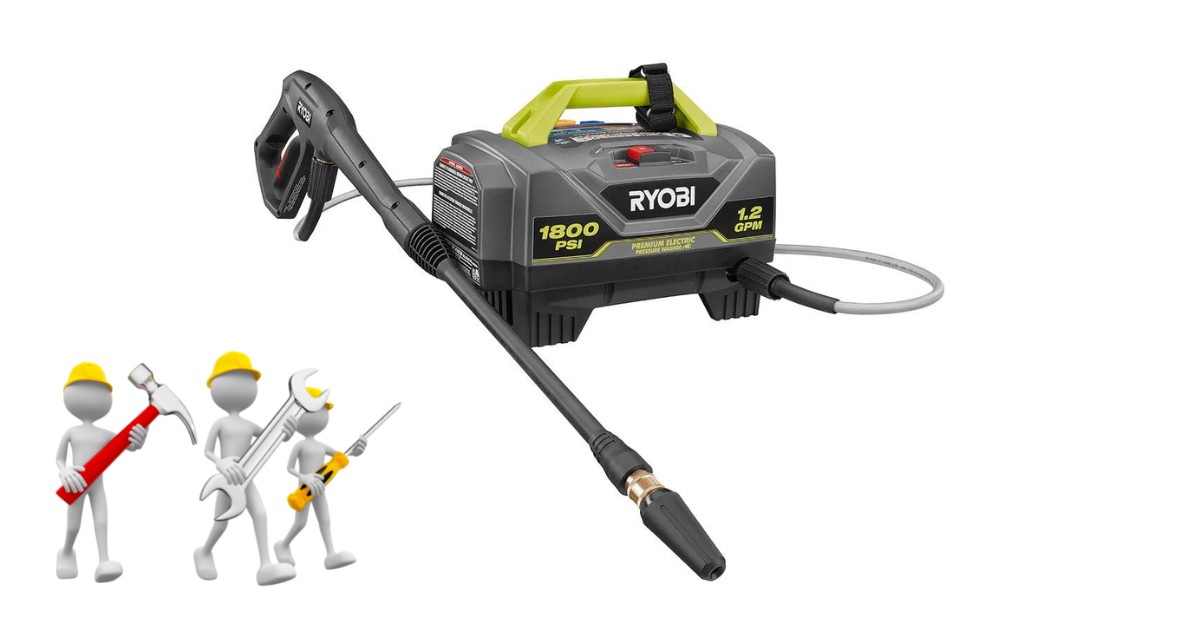
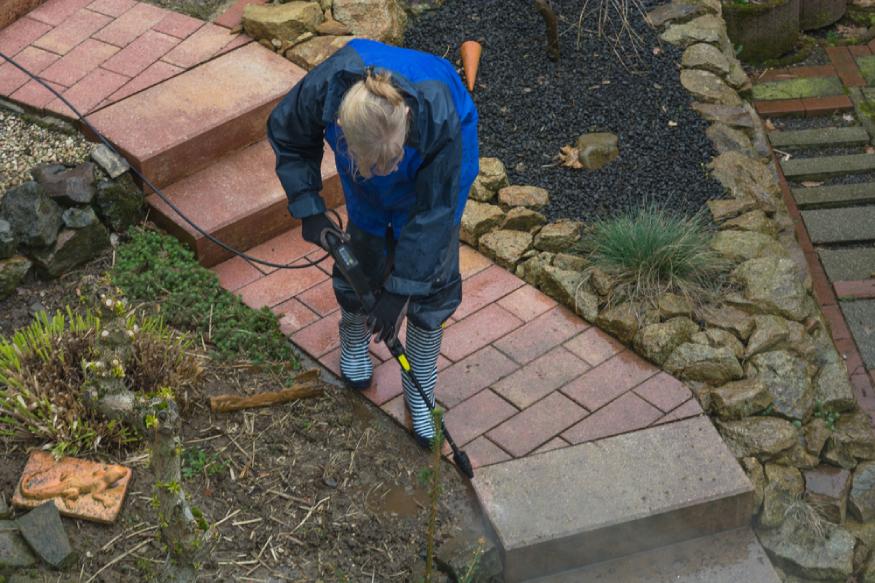
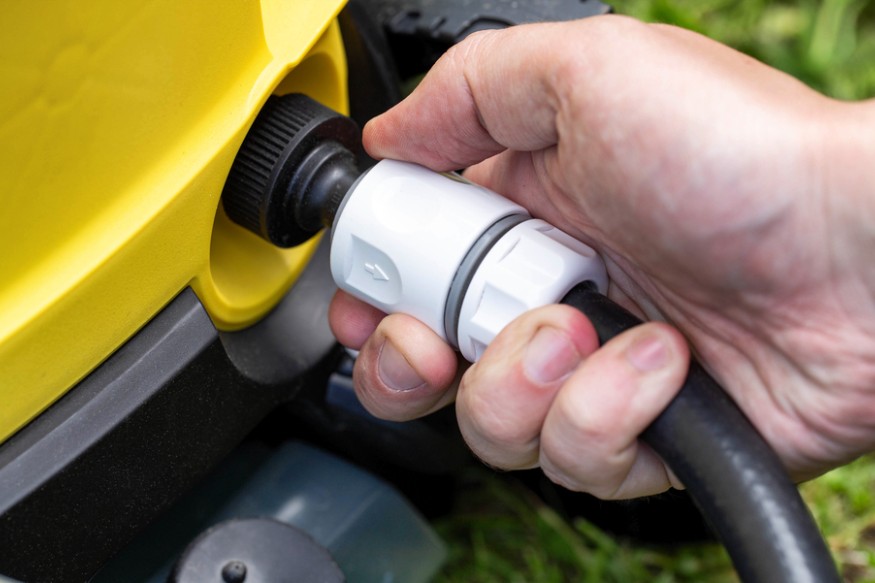
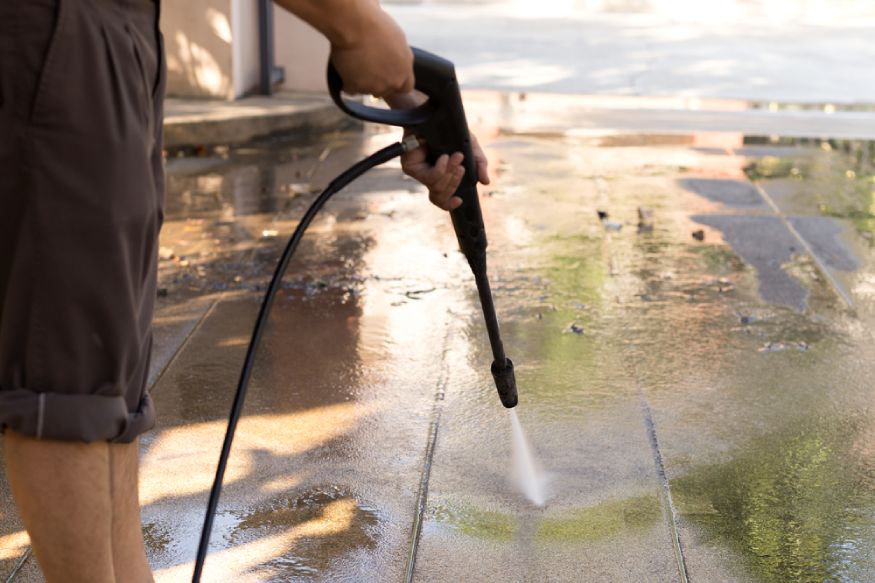
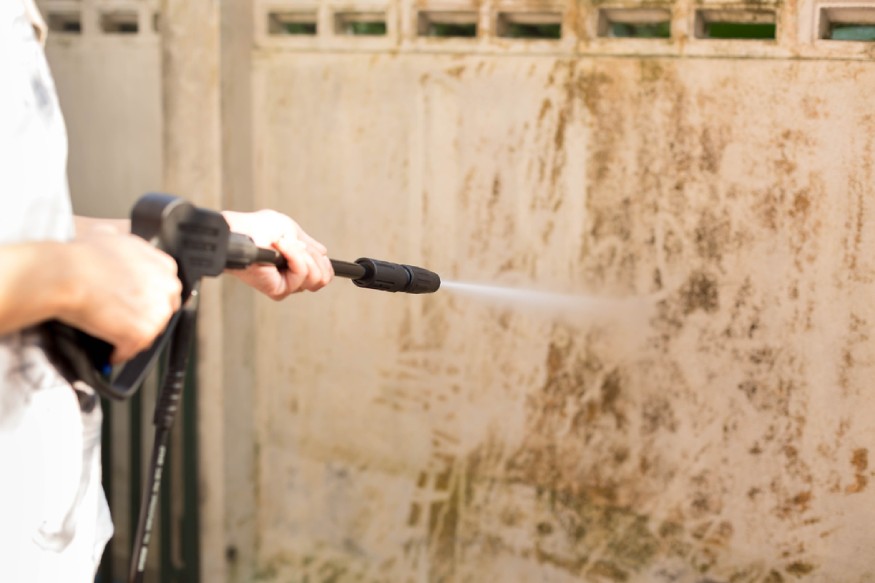
When I release my trigger water continues to come out under pressure.